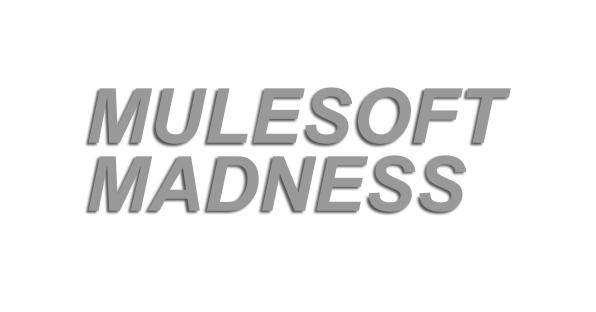It’s time to dust off those old Jock Jams CDs, pump up the jam, and let’s get ready to rumble! It’s time to use bracketology in the technical world to create something new, something exciting. A competitive bracket that compares some of the top features and capabilities of the MuleSoft platform and pits them against each other in a win or go home tournament that we call MuleSoft Madness.
As Dickie V. would say, “This is going to be awesome, baby, with a capital “A.” So without further ado, here are the selections.
No. 8 – Anypoint Design Center
Coming in at No. 8 is Anypoint Design Center. Though it’s coming in as the low seed, Design Center is not one to write off as an easy task. Boasting a dynamic duo of API Designer and Flow Designer, Design Center comes into this tournament with the ability to create API specifications and fragments in RAML using text or visual editors, as well as being able to create Mule applications and flows with a more visual card-based sequential approach.
No. 7 – Anypoint Connectors
Our No. 7 seed is the Anypoint Connectors. Connectors come in as one of the most reusable and versatile components in the tournament. Connectors have made their way into the tournament by simplifying the process and reducing complexity for easier maintenance. With the ability to use MuleSoft-built connectors or create your own, connectors will prove to be no easy walk in the park to get past.
No. 6 – MUnit
MUnit shows up on our list as the No. 6 seed in the tournament and will be a true test for any matchup. Full integration is the key for MUnit as it allows you to create and run tests in the same manner as you would a Mule application. Just to name a few of the weapons that MUnit has to offer, this testing framework will use mocks, spies, and can generate impressive coverage results.
No. 5 – Anypoint Studio
Our No. 5 seed is Anypoint Studio. Anypoint Studio is MuleSoft’s Eclipse-based IDE. Productivity is the name of the game for Studio. Everything about Anypoint Studio is built to enhance the speed of production. Instant running of your Mule applications, a code editor that allows you to switch between XML and visual modes, and code debugging using breakpoints are just a few of the features that Studio will use to compete.
No. 4 – APIkit
APIkit comes in at No. 4. Simplification is one of the ways that APIkit has found success and ended up in this spot. By simplifying the design and implementation process, APIkit will generate Mule flows based on the RAML or WSDL that has already been created either within Design Center or Anypoint Studio. There is even an API console that is automatically opened that will allow you to view generated documentation for the API.
No. 3 – Mule Runtime
Mule Runtime has found its way to the No. 3 spot. Mule Runtime is literally the engine that runs Mule applications. By being such a lightweight engine the Mule Runtime really excels at reliability, security, and scalability. Boasting the defense to create security policies for an API and regulate traffic through Mule applications will surely lead to success as the matchups play out. The wildcard to watch here will be the Dataweave language. Dataweave is MuleSoft’s expression language that allows for various ways to transform data.
No. 2 – Anypoint Exchange
The No. 2 seed is Anypoint Exchange. Anypoint Exchange will be one of those features that lives or dies by the 3. Discovering, sharing, and incorporating assets are those 3 main points that drive Anypoint Exchange. Exchange even offers capabilities such as an API console for a better view of all API functions, API documentation by way of API Notebook, and even allows for the simulation of data using a mocking service.
No. 1 – API Manager
Topping the bracket as the No. 1 overall seed is API Manager. Great managers and coaches always find a way to win and API manager comes in as one of the major components for managing APIs. Knocking API Manager out will be no easy task as it is tightly integrated with many of the other main tools. Permissions, versioning, and analytics are just a few of the management tasks API Manager is capable of to go along with being able to use API instances in a variety of ways and also set up proxies.

As you can tell, MuleSoft touts a large collection of powerful capabilities. The anticipation is high now that the seeds have all been assigned and the matchups set.
Check back to see which feature wins out. We’ll play out these matchups and go in-depth to find out which feature will be the true champion. I leave you with the words of King Leonidas, “Madness? This is MuleSoft Madness!”
In the meantime, check out our whitepaper, The Value of MuleSoft Anypoint Platform, to get insight into the technical, business, and financial advantages of the platform as well as a comparison case study. You can learn more here.


